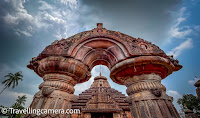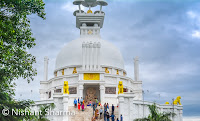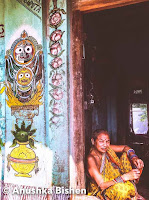Nestled in the heart of Bhubaneswar, the capital city of Odisha in India, lies a true architectural marvel that whispers tales of ancient times and showcases the exquisite craftsmanship of a bygone era. The Raja Rani Temple, also known as the 'Love Temple,' stands as a symbol of artistic brilliance, spiritual devotion, and historical significance. Its intricate sculptures, unique architecture, and captivating history make it a must-visit destination for history enthusiasts, architecture admirers, and those seeking a spiritual connection.
The Raja Rani Temple was built sometime during the 11th century, possibly between the 10th and 11th centuries, by the rulers of the Kalinga dynasty. This dynasty played a crucial role in shaping the cultural and historical landscape of Odisha, and the Raja Rani Temple is a testament to their devotion and patronage of the arts.
The temple is often associated with Lord Shiva due to its architectural similarities to other Shiva temples in the region, but its exact religious purpose remains a subject of debate among historians.
What sets the Raja Rani Temple apart is its unique and intricate architecture. Unlike many temples in India that are dedicated to a specific deity, this temple lacks a central deity idol in its sanctum. Instead, it is adorned with beautifully sculpted figures and intricate carvings that depict scenes from Hindu epics, mythologies, and daily life.
The temple is known for its ornate exterior, adorned with various depictions of gods, goddesses, and celestial beings. The most notable feature of the temple's exterior is the intricate sculptural friezes that wrap around the temple, showcasing the artistic skill and attention to detail of the craftsmen of that era.
The sculptural reliefs on the temple walls offer a mesmerizing glimpse into the lives and stories of ancient times. The intricate carvings depict a myriad of themes, ranging from divine figures engaging in celestial dances to scenes from daily life, showcasing the society's cultural practices and traditions.
The temple walls tell stories of devotion, love, and valor, all carved in stone for generations to admire and ponder.
The temple's nickname, the "Love Temple," is attributed to the passionate depictions of couples that adorn its exterior walls.
These sculptures often depict sensuous and tender moments between men and women, embracing the theme of love in its various forms. Some theories suggest that the temple might have been associated with Tantric practices, while others believe that the sculptures might represent the eternal union of Shiva and Parvati.
Over the centuries, the Raja Rani Temple has weathered the test of time, with its intricate carvings and architectural beauty largely intact. The Archaeological Survey of India (ASI) has been responsible for its preservation and maintenance, ensuring that future generations can continue to marvel at its grandeur.
Visiting the Raja Rani Temple isn't just an architectural exploration; it's a spiritual and cultural journey.
As you walk through its intricately carved corridors, you'll feel a deep connection to the past, a sense of wonder at the artistic genius of ancient craftsmen, and a spiritual resonance that transcends time.
The Raja Rani Temple stands as a shining gem in the city of Bhubaneswar, reflecting the rich heritage and artistic legacy of Odisha.
Its intricate sculptures, architectural splendor, and historical significance make it a destination that leaves an indelible mark on anyone fortunate enough to visit. Whether you're a history buff, an art enthusiast, or a traveler seeking spiritual serenity, the Raja Rani Temple welcomes you to explore its captivating beauty and uncover the stories etched in stone.
Related Blogposts :

































.jpg)
Comments